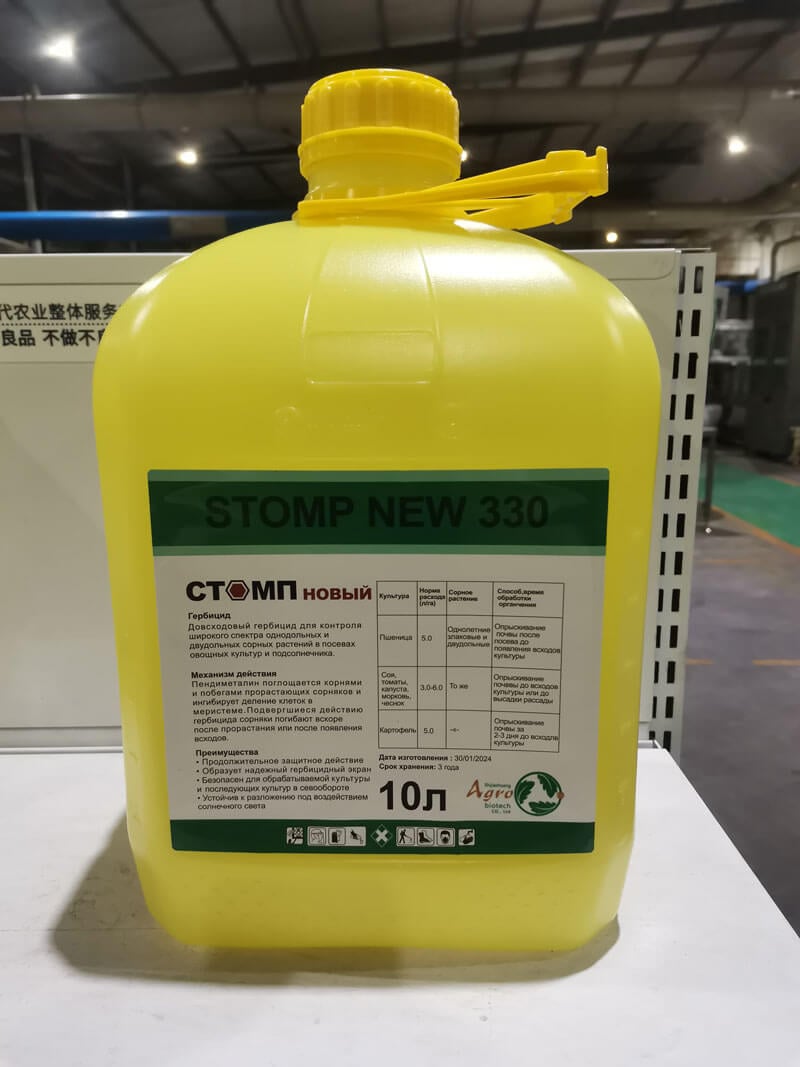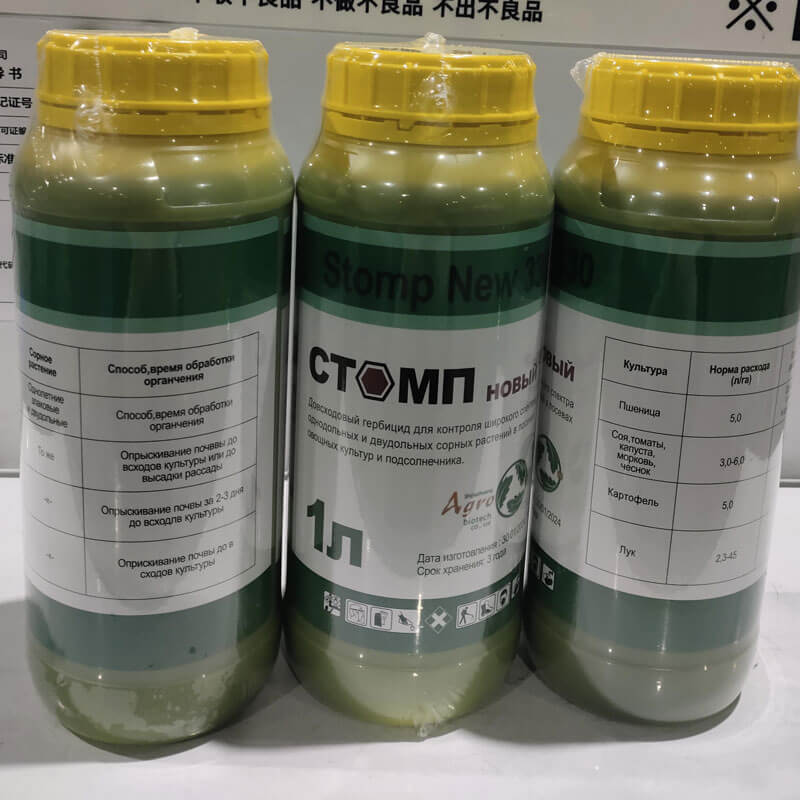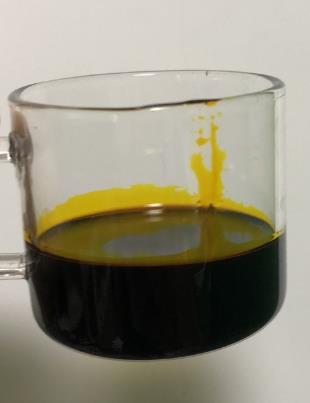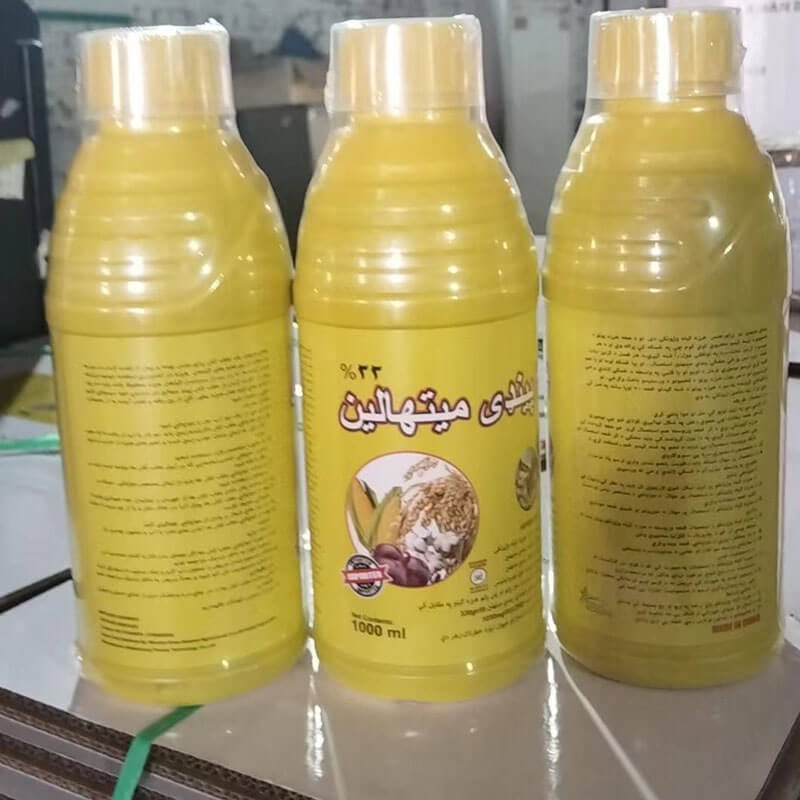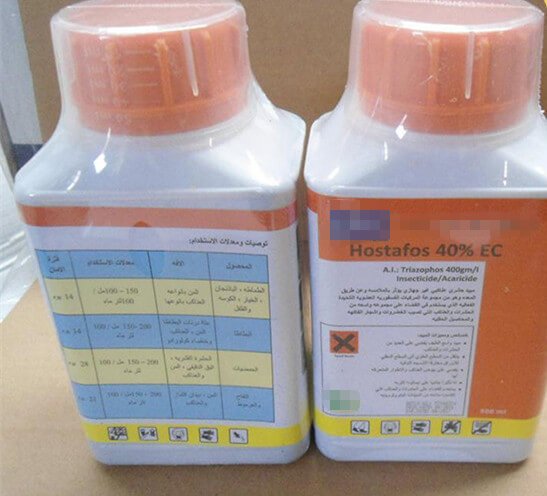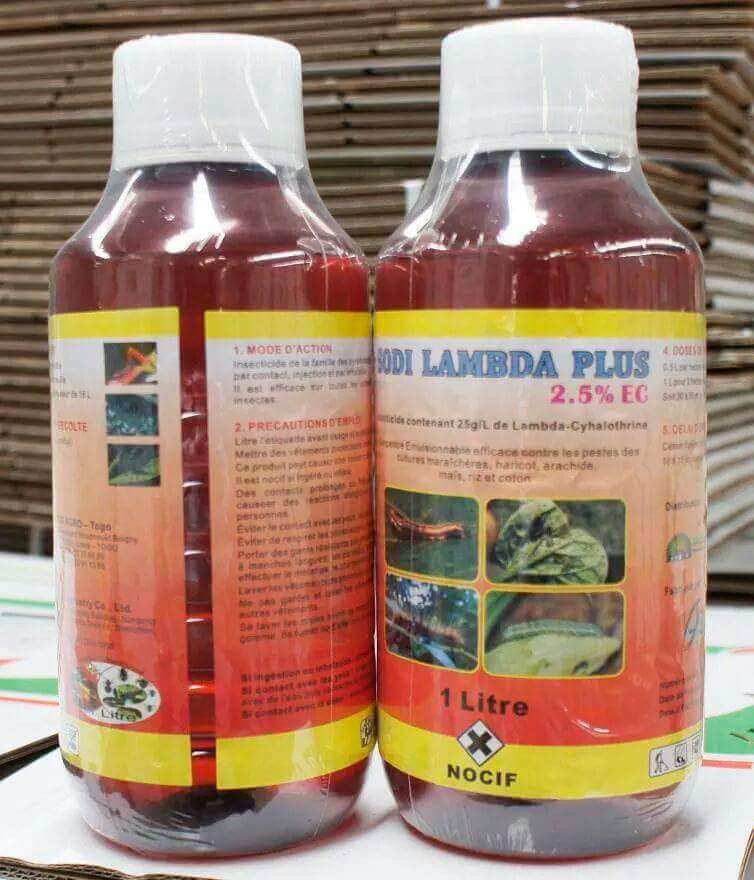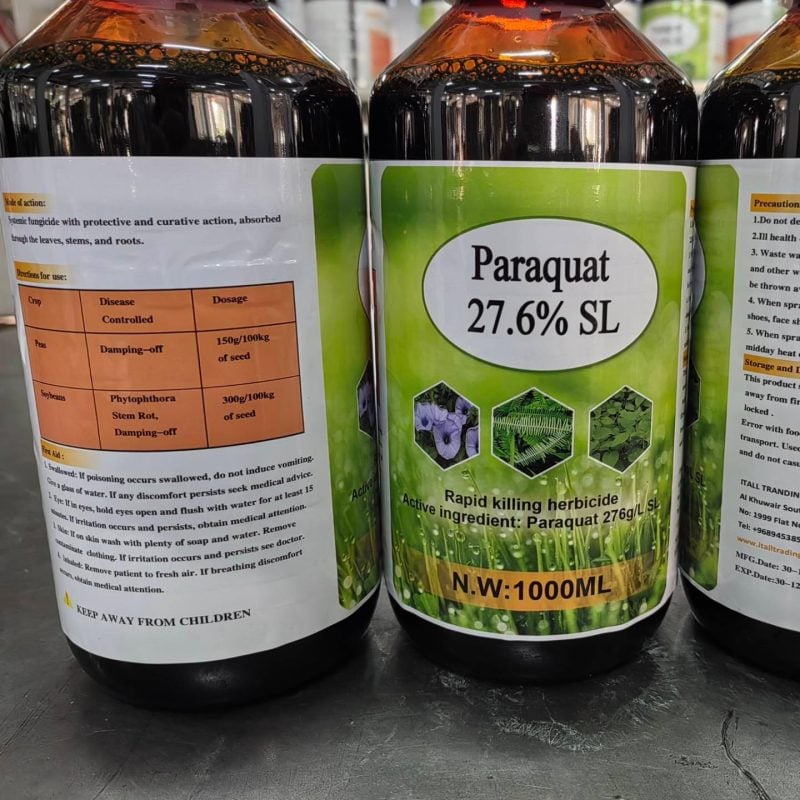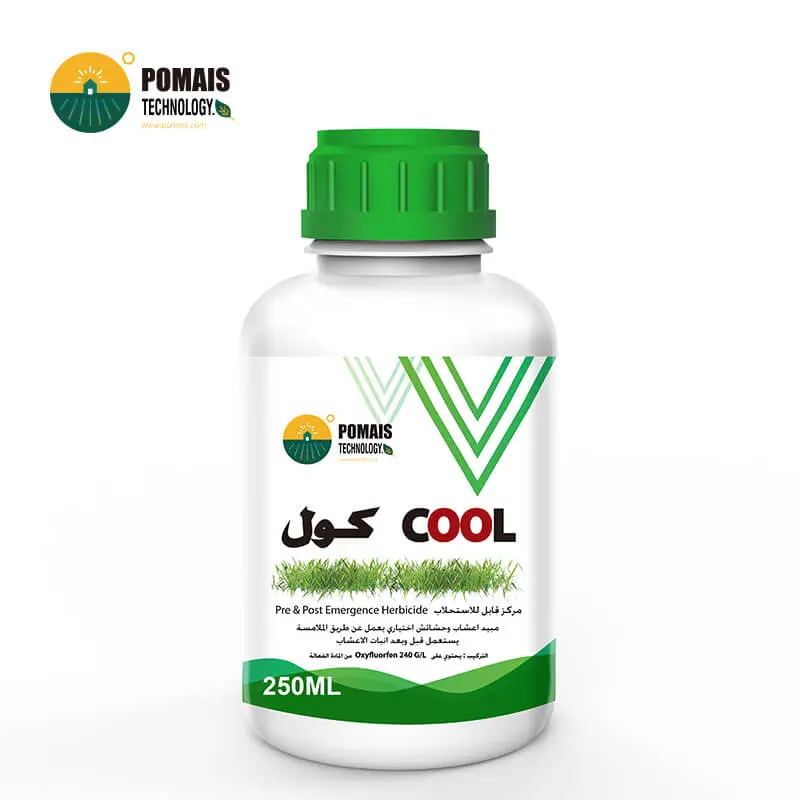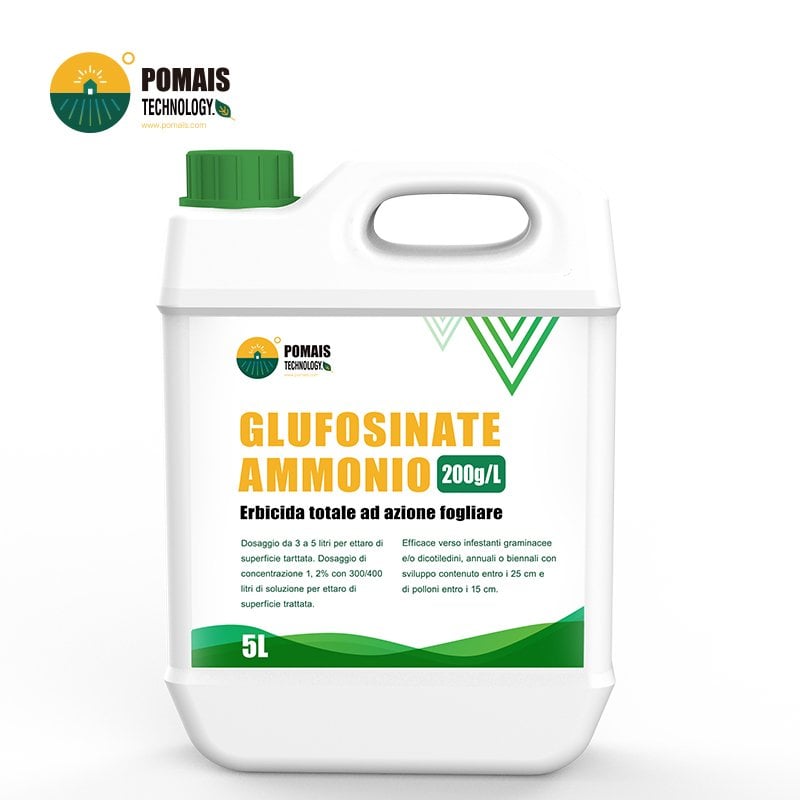Common Purslane (Portulaca oleracea) Control Strategies
Why Purslane Control Matters in Modern Agriculture
If you’re managing open-field vegetables, vineyards, orchards, or landscaped production areas, common purslane (Portulaca oleracea) is a weed you cannot afford to ignore. Though small and low-growing, this summer annual broadleaf plant is among the most invasive and competitive species found in warm-season production systems. It germinates quickly, spreads aggressively through both seeds and stem fragments, and thrives under both dry and irrigated conditions.
As a distributor, grower, or input supplier, failing to implement early-stage purslane control can result in:
- Yield suppression from competition for water, nutrients, and sunlight
- Soil seedbank buildup, leading to season-after-season reinfestation
- Herbicide resistance risk when only post-emergent control is used
- Operational inefficiencies due to increased labor for hand-weeding or late corrective sprays
At POMAIS Agriculture, we provide professional-grade herbicide solutions designed to suppress both seed germination and emerged purslane populations—ensuring your fields remain productive, weed-free, and compliant with crop protection standards. This guide will help you:
- Accurately identify common purslane at all life stages
- Understand its agronomic impact
- Select the right pre- and post-emergent herbicide strategy
- Build an integrated control program using our product portfolio
If purslane is undermining your production system or customer satisfaction, it’s time to take strategic control—with proven chemistry, responsible use, and expert formulation support.
How to Identify Common Purslane (Portulaca oleracea)
Effective weed control begins with accurate identification. Common purslane is a fast-growing, low-profile summer annual broadleaf that can be easily overlooked in early stages—but its distinct morphology makes it identifiable when properly observed. As a supplier, agronomist, or grower, recognizing this weed at seedling and mature stages enables you to apply herbicide treatments at the right time, using the right products.
Key Identification Features
Seedling Stage
- Cotyledons are egg-shaped to oblong, thick, and hairless, often with a red tinge.
- Leaves are opposite, succulent, and stalkless or nearly so.
- Early seedlings hug the soil surface and form compact mats.
Mature Plant
- Growth is prostrate to sprawling, with multiple thick branches spreading outward from a central crown.
- Leaves are oval to spatula-shaped, 5–30 mm long, thick and fleshy, sometimes with reddish margins.
- Leaves are either opposite or alternate along the stems.
Flowers and Reproductive Structures
- Flowers are small, yellow, typically with five petals, and appear at stem tips.
- Blooming occurs from May through September, mainly during hot, sunny conditions.
- Flowers open mid-morning and close by early afternoon, which makes detection time-sensitive in field scouting.
Fruits and Seeds
- Produces capsules that split horizontally to release hundreds of tiny seeds.
- Seeds are less than 1 mm, flattened, dark brown to black, and highly viable.
Reproduction and Spread
- Primary mode of spread is by seed, which can remain viable in the soil for years.
- Secondary spread occurs through stem fragments, which can root and regenerate under favorable conditions.
Differentiation from Similar Weeds
- Purslane is unlikely to be confused with other turf or crop weeds due to its succulent foliage and reddish stems.
- It is often mistaken for spurge at a glance, but spurge has hairy, thinner leaves and exudes milky sap when broken—purslane does not.
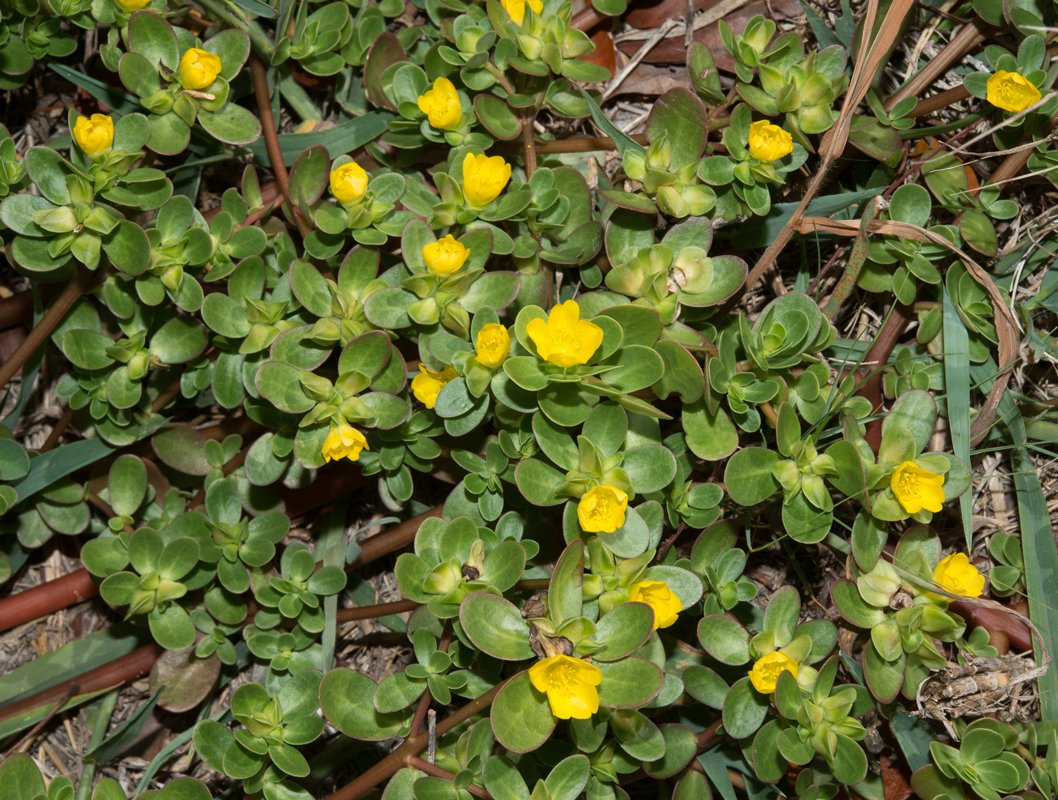

By correctly identifying purslane early in the season, you can time your pre-emergent herbicide applications to prevent establishment, or apply post-emergents before it sets seed. At POMAIS, we support our clients with visual ID guides, herbicide timing charts, and technical recommendations tailored to regional climates and crop systems.
Where Does Purslane Thrive?
Common purslane is not just opportunistic—it is highly adaptive across a broad range of agricultural and disturbed environments, which makes it particularly challenging for growers managing commercial crops, orchards, or landscaped systems. Understanding where and why purslane establishes gives you the ability to anticipate infestations and apply herbicides or preventive measures proactively.
Preferred Environmental Conditions
- Climate Adaptability: Thrives in subtropical and Mediterranean climates, but also performs well in temperate zones with irrigation. In California, it’s commonly found up to 1400 meters elevation.
- Soil Type: Prefers loose, sandy, and nutrient-rich soils, especially in recently tilled or disturbed ground. It competes strongly under low fertility and compacted conditions, but dominates even faster under fertile, well-drained soils.
- Moisture Tolerance: Despite its succulent leaves and drought tolerance, purslane grows vigorously in irrigated fields and humid greenhouse environments—making it a year-round concern in intensively managed horticultural systems.
- Sunlight Requirements: Requires full sun to germinate and flower. Seedling development accelerates under high-temperature, high-light exposure, which is typical in bare or newly planted rows.
High-Risk Habitats
You are likely to encounter dense purslane pressure in:
- Row crops with wide inter-row spacing
- Orchards and vineyards with limited ground cover
- Vegetable fields with frequent irrigation and shallow cultivation
- Nurseries and landscaping sites, especially in containerized soil mixes
- Roadways, fence lines, and waste areas, where mechanical disturbance and foot traffic are high
Agronomic Challenge
Once purslane becomes established in these areas, it:
- Forms a thick ground canopy that smothers seedlings
- Interferes with drip irrigation systems
- Generates thousands of seeds per plant, creating persistent seedbanks
- Recolonizes rapidly after cultivation or manual removal
At POMAIS, we recommend combining soil-active pre-emergent herbicides with regular field monitoring in these zones, backed by proper moisture management and field sanitation. Identifying risk zones early enables you to apply herbicides before emergence and reduce the overall herbicide load during peak season.
Why Is Common Purslane a Problem in Crop Systems?
If left unmanaged, common purslane can significantly reduce crop performance and operational efficiency across a wide range of agricultural systems. Its low growth habit and aggressive reproduction allow it to bypass early-stage detection while silently undermining productivity. For professional growers and agrochemical suppliers, understanding the full scope of purslane’s agronomic threat is essential to building cost-effective control programs.
1. Competitive Impact on Crops
- Water and Nutrient Competition: Purslane’s shallow but efficient root system aggressively absorbs surface moisture and nutrients, especially nitrogen and phosphorus, depriving germinating or shallow-rooted crops.
- Rapid Biomass Accumulation: In as little as 2–3 weeks, purslane can form dense mats that physically suppress seedling emergence, limit airflow, and reduce photosynthesis in young crops.
- Light Competition: Its prostrate growth covers the soil rapidly, shading out crop rows before canopy closure.
2. Persistence and Reinfestation
- High Seed Output: A single plant can produce tens of thousands of seeds, each capable of surviving in the soil for multiple seasons.
- Regrowth from Fragments: Even after cultivation or partial removal, stem fragments left in the soil can re-root and reestablish, creating a cycle of reinfestation.
- Extended Germination Window: Seeds germinate throughout the growing season, making it difficult to target all flushes with a single herbicide application.
3. Herbicide Resistance Risk
- Overreliance on post-emergent contact herbicides increases the chance of resistance development.
- In systems where glyphosate is used continuously (e.g., orchards, vineyards), purslane populations may adapt, requiring diversified active ingredient strategies.
4. Operational and Economic Burden
- Increased labor for manual weeding
- Reduced harvest efficiency due to clogged equipment or overgrowth
- Crop rejection risks in horticultural markets where weed contamination is not tolerated
- Loss of certified status in organic or clean field programs when infestations reach visible thresholds
Purslane is more than a cosmetic issue—it’s a yield-limiting, cost-amplifying, and compliance-threatening weed. At POMAIS, we address this threat with integrated pre- and post-emergent herbicide programs, technical support for proper timing, and product formulations suited to your regional needs and regulatory standards.
Herbicide Solutions for Purslane Control
Given common purslane’s aggressive reproductive capacity and adaptability, chemical control is a critical component of any effective weed management strategy. Whether you’re aiming to prevent emergence or eliminate visible infestations, selecting the appropriate active ingredient and formulation is key to long-term suppression.
POMAIS offers a full portfolio of pre-emergent and post-emergent herbicides designed for commercial use in vegetable production, orchards, vineyards, and horticultural fields. These products can be supplied in bulk, OEM-labeled, or tailored to your regional market needs.
Pre-Emergent Herbicides: Stop Purslane Before It Emerges
Pre-emergent herbicides create a chemical barrier in the top layer of soil, inhibiting seed germination and seedling establishment. This approach is ideal for preventing the first flush of purslane growth during spring or between crop rotations.
Recommended Active Ingredients:
- Oxadiazon – Effective in both bare ground and turf systems. Strong residual control on small-seeded broadleaves.
- Pendimethalin – Widely used in row crops and orchards. Excellent compatibility with many pre-plant systems.
- Prodiamine – Long residual performance; ideal for horticultural fields and nursery beds.
POMAIS Solutions:
- Oxadiazon 25% EC
- Pendimethalin 33% EC
- Prodiamine 65% WG
Application Timing:
- Apply before irrigation or rainfall to activate the chemical barrier
- Use during early spring or post-harvest fallow periods
Post-Emergent Herbicides: Control Visible Purslane Growth
Post-emergent herbicides are essential when purslane has already emerged, especially in bare ground zones, between rows, or in orchard alleys. These act through contact or systemic activity to disrupt photosynthesis or destroy cell membranes, leading to desiccation and plant death.
Recommended Active Ingredients:
- Glufosinate – Non-selective, contact action. Fast burn-down with low soil residual. Safe for orchard row middles when properly applied.
- Paraquat – Highly effective for quick knockdown. Use with caution under protective handling protocols.
- Oxyfluorfen – Both contact and residual control. Useful in dormant periods and inter-row orchard management.
POMAIS Solutions:
- Glufosinate 15% SL
- Paraquat 20% SL
- Oxyfluorfen 24% EC
Best Practices:
- Use shielded sprayers or targeted application to avoid crop injury
- Combine with non-ionic surfactants for improved leaf penetration
- Avoid use during crop emergence unless label permits
Integration Tips
- Combine pre- and post-emergent products in staged application programs to manage both seedbank and live infestations
- Rotate active ingredients to prevent herbicide resistance
- Match product selection to soil type, crop tolerance, and seasonal growth stage
At POMAIS, we not only deliver high-quality herbicides—we provide technical guidance, custom formulation support, and export documentation to ensure your product line meets both agronomic performance and regulatory standards.
Cultural Practices to Support Chemical Control
While herbicides are essential for breaking the growth cycle of common purslane, chemical solutions alone are not enough to achieve long-term weed suppression. Purslane’s regenerative capabilities and prolific seed production require an integrated approach that includes preventive and cultural practices alongside herbicide use.
Implementing the following measures helps reduce seedbank pressure, improve herbicide performance, and extend the interval between treatments—resulting in a more resilient and cost-effective production system.
1. Timely Field Sanitation
- Remove crop residues, purslane stems, and old mulch immediately after harvest.
- Prevent leftover stem fragments from regenerating between crop cycles.
- Maintain weed-free buffer zones near irrigation systems and fence lines.
2. Cultivation and Soil Management
- Use shallow tillage before pre-emergent herbicide application to disrupt surface-germinating seeds.
- Avoid deep cultivation during active growth periods, as it may fragment purslane stems and promote re-rooting.
- In high-pressure areas, apply plastic mulch or ground cover fabrics to suppress light penetration.
3. Irrigation Scheduling
- Limit shallow, frequent watering that favors purslane germination.
- Apply deep, infrequent irrigation to strengthen crop root systems and reduce surface weed emergence.
- In greenhouse or nursery systems, monitor capillary mats and potting mixes where purslane readily establishes.
4. Crop Rotation and Ground Cover
- Rotate with fast-growing cover crops (e.g., ryegrass, buckwheat) between production cycles to smother seedling establishment.
- In perennial systems like orchards, use approved alleycrop covers or turf that outcompetes broadleaf weeds.
- Avoid long fallow periods with exposed soil—this invites germination and re-infestation.
5. Monitor and Adjust Herbicide Strategy
- Regularly scout for early-stage purslane seedlings, especially after irrigation or rainfall events.
- Adjust application timing based on regional emergence windows and soil temperatures.
- Reapply pre-emergent herbicides before seasonal flushes to maintain soil coverage.
At POMAIS, we help clients build weed control programs that combine chemistry with field practicality, supported by real-world data and technical know-how. Our goal is not only to control weeds, but to reduce your long-term input costs and build agronomic sustainability.
Summary of Recommended Products for Purslane Control
To streamline product selection for agrochemical distributors and professional users, the table below summarizes key herbicide recommendations from POMAIS. Each entry is categorized by application timing, formulation type, and specific use case in field conditions where common purslane poses an economic threat.
| Category | Active Ingredient | Formulation | Primary Use |
|---|---|---|---|
| Pre-Emergent | Oxadiazon | EC / GR | Soil-applied barrier before seed germination |
| Prodiamine | WG | Long-residual control in turf, ornamentals, and nursery beds | |
| Pendimethalin | EC | Broadacre weed prevention in vegetables and orchards | |
| Post-Emergent | Glufosinate | SL | Non-selective knockdown in orchards, vineyards, open rows |
| Paraquat | SL | Fast contact action for bare ground or inter-row spraying | |
| Oxyfluorfen | EC | Contact + residual control during dormant periods | |
| Integrated Use | Prodiamine + Fertilizer | GR | Weed suppression with simultaneous turf fertilization |
Note: All formulations can be customized for OEM/private label production, and are available with full export documentation including MSDS, COA, and registration support.
At POMAIS, our technical team works with partners across different regions to adjust concentration, packaging size, and label design based on crop compatibility, local regulations, and user preference.
Professional-Grade Support from POMAIS
At POMAIS Agriculture, we are more than a herbicide supplier—we are your strategic partner in developing effective, scalable weed control solutions. Whether you’re managing a commercial vegetable operation, supplying inputs to orchard growers, or distributing turf care products, our team helps you stay ahead of persistent weeds like common purslane with products that deliver results in the field.
Why Choose POMAIS?
- Extensive Export Experience
We serve distributors and resellers across the Middle East, Africa, South America, Central Asia, and Russia, ensuring compliance with local regulations and seasonal demand cycles. - OEM and Private Label Manufacturing
Launch your own branded herbicide line with custom formulations, multilingual labels, and packaging designs tailored to your market. - Full Technical and Regulatory Support
Receive complete documentation including MSDS, COA, label design files, and support for product registration in your target country. - Diverse Product Formats
Choose from EC, SC, SL, WG, GR and more—each manufactured to ISO standards and tested for field performance, stability, and packaging durability. - Flexible Supply and Fast Delivery
We maintain seasonal inventory, just-in-time delivery options, and long-term production planning to support your business growth.
Whether you’re combating purslane in a high-value crop system or looking to expand your herbicide product line, POMAIS delivers field-proven chemistry, reliable supply, and technical expertise to help you succeed.
Contact us today to request a quotation, sample pack, or formulation recommendation tailored to your region and application needs.
Why Purslane Control Matters in Modern Agriculture
If you’re managing open-field vegetables, vineyards, orchards, or landscaped production areas, common purslane (Portulaca oleracea) is a weed you cannot afford to ignore. Though small and low-growing, this summer annual broadleaf plant is among the most invasive and competitive species found in warm-season production systems. It germinates quickly, spreads aggressively through both seeds and stem fragments, and thrives under both dry and irrigated conditions.
As a distributor, grower, or input supplier, failing to implement early-stage purslane control can result in:
- Yield suppression from competition for water, nutrients, and sunlight
- Soil seedbank buildup, leading to season-after-season reinfestation
- Herbicide resistance risk when only post-emergent control is used
- Operational inefficiencies due to increased labor for hand-weeding or late corrective sprays
At POMAIS Agriculture, we provide professional-grade herbicide solutions designed to suppress both seed germination and emerged purslane populations—ensuring your fields remain productive, weed-free, and compliant with crop protection standards. This guide will help you:
- Accurately identify common purslane at all life stages
- Understand its agronomic impact
- Select the right pre- and post-emergent herbicide strategy
- Build an integrated control program using our product portfolio
If purslane is undermining your production system or customer satisfaction, it’s time to take strategic control—with proven chemistry, responsible use, and expert formulation support.
How to Identify Common Purslane (Portulaca oleracea)
Effective weed control begins with accurate identification. Common purslane is a fast-growing, low-profile summer annual broadleaf that can be easily overlooked in early stages—but its distinct morphology makes it identifiable when properly observed. As a supplier, agronomist, or grower, recognizing this weed at seedling and mature stages enables you to apply herbicide treatments at the right time, using the right products.
Key Identification Features
Seedling Stage
- Cotyledons are egg-shaped to oblong, thick, and hairless, often with a red tinge.
- Leaves are opposite, succulent, and stalkless or nearly so.
- Early seedlings hug the soil surface and form compact mats.
Mature Plant
- Growth is prostrate to sprawling, with multiple thick branches spreading outward from a central crown.
- Leaves are oval to spatula-shaped, 5–30 mm long, thick and fleshy, sometimes with reddish margins.
- Leaves are either opposite or alternate along the stems.
Flowers and Reproductive Structures
- Flowers are small, yellow, typically with five petals, and appear at stem tips.
- Blooming occurs from May through September, mainly during hot, sunny conditions.
- Flowers open mid-morning and close by early afternoon, which makes detection time-sensitive in field scouting.
Fruits and Seeds
- Produces capsules that split horizontally to release hundreds of tiny seeds.
- Seeds are less than 1 mm, flattened, dark brown to black, and highly viable.
Reproduction and Spread
- Primary mode of spread is by seed, which can remain viable in the soil for years.
- Secondary spread occurs through stem fragments, which can root and regenerate under favorable conditions.
Differentiation from Similar Weeds
- Purslane is unlikely to be confused with other turf or crop weeds due to its succulent foliage and reddish stems.
- It is often mistaken for spurge at a glance, but spurge has hairy, thinner leaves and exudes milky sap when broken—purslane does not.


By correctly identifying purslane early in the season, you can time your pre-emergent herbicide applications to prevent establishment, or apply post-emergents before it sets seed. At POMAIS, we support our clients with visual ID guides, herbicide timing charts, and technical recommendations tailored to regional climates and crop systems.
Where Does Purslane Thrive?
Common purslane is not just opportunistic—it is highly adaptive across a broad range of agricultural and disturbed environments, which makes it particularly challenging for growers managing commercial crops, orchards, or landscaped systems. Understanding where and why purslane establishes gives you the ability to anticipate infestations and apply herbicides or preventive measures proactively.
Preferred Environmental Conditions
- Climate Adaptability: Thrives in subtropical and Mediterranean climates, but also performs well in temperate zones with irrigation. In California, it’s commonly found up to 1400 meters elevation.
- Soil Type: Prefers loose, sandy, and nutrient-rich soils, especially in recently tilled or disturbed ground. It competes strongly under low fertility and compacted conditions, but dominates even faster under fertile, well-drained soils.
- Moisture Tolerance: Despite its succulent leaves and drought tolerance, purslane grows vigorously in irrigated fields and humid greenhouse environments—making it a year-round concern in intensively managed horticultural systems.
- Sunlight Requirements: Requires full sun to germinate and flower. Seedling development accelerates under high-temperature, high-light exposure, which is typical in bare or newly planted rows.
High-Risk Habitats
You are likely to encounter dense purslane pressure in:
- Row crops with wide inter-row spacing
- Orchards and vineyards with limited ground cover
- Vegetable fields with frequent irrigation and shallow cultivation
- Nurseries and landscaping sites, especially in containerized soil mixes
- Roadways, fence lines, and waste areas, where mechanical disturbance and foot traffic are high
Agronomic Challenge
Once purslane becomes established in these areas, it:
- Forms a thick ground canopy that smothers seedlings
- Interferes with drip irrigation systems
- Generates thousands of seeds per plant, creating persistent seedbanks
- Recolonizes rapidly after cultivation or manual removal
At POMAIS, we recommend combining soil-active pre-emergent herbicides with regular field monitoring in these zones, backed by proper moisture management and field sanitation. Identifying risk zones early enables you to apply herbicides before emergence and reduce the overall herbicide load during peak season.
Why Is Common Purslane a Problem in Crop Systems?
If left unmanaged, common purslane can significantly reduce crop performance and operational efficiency across a wide range of agricultural systems. Its low growth habit and aggressive reproduction allow it to bypass early-stage detection while silently undermining productivity. For professional growers and agrochemical suppliers, understanding the full scope of purslane’s agronomic threat is essential to building cost-effective control programs.
1. Competitive Impact on Crops
- Water and Nutrient Competition: Purslane’s shallow but efficient root system aggressively absorbs surface moisture and nutrients, especially nitrogen and phosphorus, depriving germinating or shallow-rooted crops.
- Rapid Biomass Accumulation: In as little as 2–3 weeks, purslane can form dense mats that physically suppress seedling emergence, limit airflow, and reduce photosynthesis in young crops.
- Light Competition: Its prostrate growth covers the soil rapidly, shading out crop rows before canopy closure.
2. Persistence and Reinfestation
- High Seed Output: A single plant can produce tens of thousands of seeds, each capable of surviving in the soil for multiple seasons.
- Regrowth from Fragments: Even after cultivation or partial removal, stem fragments left in the soil can re-root and reestablish, creating a cycle of reinfestation.
- Extended Germination Window: Seeds germinate throughout the growing season, making it difficult to target all flushes with a single herbicide application.
3. Herbicide Resistance Risk
- Overreliance on post-emergent contact herbicides increases the chance of resistance development.
- In systems where glyphosate is used continuously (e.g., orchards, vineyards), purslane populations may adapt, requiring diversified active ingredient strategies.
4. Operational and Economic Burden
- Increased labor for manual weeding
- Reduced harvest efficiency due to clogged equipment or overgrowth
- Crop rejection risks in horticultural markets where weed contamination is not tolerated
- Loss of certified status in organic or clean field programs when infestations reach visible thresholds
Purslane is more than a cosmetic issue—it’s a yield-limiting, cost-amplifying, and compliance-threatening weed. At POMAIS, we address this threat with integrated pre- and post-emergent herbicide programs, technical support for proper timing, and product formulations suited to your regional needs and regulatory standards.
Herbicide Solutions for Purslane Control
Given common purslane’s aggressive reproductive capacity and adaptability, chemical control is a critical component of any effective weed management strategy. Whether you’re aiming to prevent emergence or eliminate visible infestations, selecting the appropriate active ingredient and formulation is key to long-term suppression.
POMAIS offers a full portfolio of pre-emergent and post-emergent herbicides designed for commercial use in vegetable production, orchards, vineyards, and horticultural fields. These products can be supplied in bulk, OEM-labeled, or tailored to your regional market needs.
Pre-Emergent Herbicides: Stop Purslane Before It Emerges
Pre-emergent herbicides create a chemical barrier in the top layer of soil, inhibiting seed germination and seedling establishment. This approach is ideal for preventing the first flush of purslane growth during spring or between crop rotations.
Recommended Active Ingredients:
- Oxadiazon – Effective in both bare ground and turf systems. Strong residual control on small-seeded broadleaves.
- Pendimethalin – Widely used in row crops and orchards. Excellent compatibility with many pre-plant systems.
- Prodiamine – Long residual performance; ideal for horticultural fields and nursery beds.
POMAIS Solutions:
- Oxadiazon 25% EC
- Pendimethalin 33% EC
- Prodiamine 65% WG
Application Timing:
- Apply before irrigation or rainfall to activate the chemical barrier
- Use during early spring or post-harvest fallow periods
Post-Emergent Herbicides: Control Visible Purslane Growth
Post-emergent herbicides are essential when purslane has already emerged, especially in bare ground zones, between rows, or in orchard alleys. These act through contact or systemic activity to disrupt photosynthesis or destroy cell membranes, leading to desiccation and plant death.
Recommended Active Ingredients:
- Glufosinate – Non-selective, contact action. Fast burn-down with low soil residual. Safe for orchard row middles when properly applied.
- Paraquat – Highly effective for quick knockdown. Use with caution under protective handling protocols.
- Oxyfluorfen – Both contact and residual control. Useful in dormant periods and inter-row orchard management.
POMAIS Solutions:
- Glufosinate 15% SL
- Paraquat 20% SL
- Oxyfluorfen 24% EC
Best Practices:
- Use shielded sprayers or targeted application to avoid crop injury
- Combine with non-ionic surfactants for improved leaf penetration
- Avoid use during crop emergence unless label permits
Integration Tips
- Combine pre- and post-emergent products in staged application programs to manage both seedbank and live infestations
- Rotate active ingredients to prevent herbicide resistance
- Match product selection to soil type, crop tolerance, and seasonal growth stage
At POMAIS, we not only deliver high-quality herbicides—we provide technical guidance, custom formulation support, and export documentation to ensure your product line meets both agronomic performance and regulatory standards.
Cultural Practices to Support Chemical Control
While herbicides are essential for breaking the growth cycle of common purslane, chemical solutions alone are not enough to achieve long-term weed suppression. Purslane’s regenerative capabilities and prolific seed production require an integrated approach that includes preventive and cultural practices alongside herbicide use.
Implementing the following measures helps reduce seedbank pressure, improve herbicide performance, and extend the interval between treatments—resulting in a more resilient and cost-effective production system.
1. Timely Field Sanitation
- Remove crop residues, purslane stems, and old mulch immediately after harvest.
- Prevent leftover stem fragments from regenerating between crop cycles.
- Maintain weed-free buffer zones near irrigation systems and fence lines.
2. Cultivation and Soil Management
- Use shallow tillage before pre-emergent herbicide application to disrupt surface-germinating seeds.
- Avoid deep cultivation during active growth periods, as it may fragment purslane stems and promote re-rooting.
- In high-pressure areas, apply plastic mulch or ground cover fabrics to suppress light penetration.
3. Irrigation Scheduling
- Limit shallow, frequent watering that favors purslane germination.
- Apply deep, infrequent irrigation to strengthen crop root systems and reduce surface weed emergence.
- In greenhouse or nursery systems, monitor capillary mats and potting mixes where purslane readily establishes.
4. Crop Rotation and Ground Cover
- Rotate with fast-growing cover crops (e.g., ryegrass, buckwheat) between production cycles to smother seedling establishment.
- In perennial systems like orchards, use approved alleycrop covers or turf that outcompetes broadleaf weeds.
- Avoid long fallow periods with exposed soil—this invites germination and re-infestation.
5. Monitor and Adjust Herbicide Strategy
- Regularly scout for early-stage purslane seedlings, especially after irrigation or rainfall events.
- Adjust application timing based on regional emergence windows and soil temperatures.
- Reapply pre-emergent herbicides before seasonal flushes to maintain soil coverage.
At POMAIS, we help clients build weed control programs that combine chemistry with field practicality, supported by real-world data and technical know-how. Our goal is not only to control weeds, but to reduce your long-term input costs and build agronomic sustainability.
Summary of Recommended Products for Purslane Control
To streamline product selection for agrochemical distributors and professional users, the table below summarizes key herbicide recommendations from POMAIS. Each entry is categorized by application timing, formulation type, and specific use case in field conditions where common purslane poses an economic threat.
| Category | Active Ingredient | Formulation | Primary Use |
|---|---|---|---|
| Pre-Emergent | Oxadiazon | EC / GR | Soil-applied barrier before seed germination |
| Prodiamine | WG | Long-residual control in turf, ornamentals, and nursery beds | |
| Pendimethalin | EC | Broadacre weed prevention in vegetables and orchards | |
| Post-Emergent | Glufosinate | SL | Non-selective knockdown in orchards, vineyards, open rows |
| Paraquat | SL | Fast contact action for bare ground or inter-row spraying | |
| Oxyfluorfen | EC | Contact + residual control during dormant periods | |
| Integrated Use | Prodiamine + Fertilizer | GR | Weed suppression with simultaneous turf fertilization |
Note: All formulations can be customized for OEM/private label production, and are available with full export documentation including MSDS, COA, and registration support.
At POMAIS, our technical team works with partners across different regions to adjust concentration, packaging size, and label design based on crop compatibility, local regulations, and user preference.
Professional-Grade Support from POMAIS
At POMAIS Agriculture, we are more than a herbicide supplier—we are your strategic partner in developing effective, scalable weed control solutions. Whether you’re managing a commercial vegetable operation, supplying inputs to orchard growers, or distributing turf care products, our team helps you stay ahead of persistent weeds like common purslane with products that deliver results in the field.
Why Choose POMAIS?
- Extensive Export Experience
We serve distributors and resellers across the Middle East, Africa, South America, Central Asia, and Russia, ensuring compliance with local regulations and seasonal demand cycles. - OEM and Private Label Manufacturing
Launch your own branded herbicide line with custom formulations, multilingual labels, and packaging designs tailored to your market. - Full Technical and Regulatory Support
Receive complete documentation including MSDS, COA, label design files, and support for product registration in your target country. - Diverse Product Formats
Choose from EC, SC, SL, WG, GR and more—each manufactured to ISO standards and tested for field performance, stability, and packaging durability. - Flexible Supply and Fast Delivery
We maintain seasonal inventory, just-in-time delivery options, and long-term production planning to support your business growth.
Whether you’re combating purslane in a high-value crop system or looking to expand your herbicide product line, POMAIS delivers field-proven chemistry, reliable supply, and technical expertise to help you succeed.
Contact us today to request a quotation, sample pack, or formulation recommendation tailored to your region and application needs.

